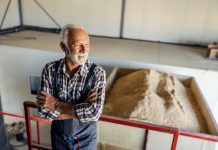
Thanks to the sniffling noses, coughs, and colds that accompany the colder months of the year, we are all too familiar with the seasonal patterns of some respiratory viruses.
In a new review study, researchers suggest that COVID-19, the illness caused by the SARS-CoV-2 virus, will likely follow suit and become seasonal in countries with temperate climates, but only when herd immunity is attained.
Until that time, COVID-19 will continue to circulate across the seasons. These conclusions highlight the absolute importance of public health measures needed just now to control the virus.
The research was conducted by a team at the American University of Beirut in Lebanon.
The team warns that COVID-19 is here to stay and it will continue to cause outbreaks year-round until herd immunity is achieved.
Therefore, the public will need to learn to live with it and continue practicing the best prevention measures, including wearing of masks, physical distancing, hand hygiene, and avoidance of gatherings.
The team affirms and states that there could be multiple waves of COVID-19 before herd immunity is achieved.
Previous research had shown that many respiratory viruses follow seasonal patterns, especially in temperate regions.
For instance, influenza and several types of coronaviruses that cause the common cold are known to peak in winter in temperate regions but circulate year-round in tropical regions.
In the study, the authors reviewed these seasonal viruses, examining the viral and host factors that control their seasonality as well as the latest knowledge on the stability and transmission of SARS-CoV-2.
They explain that virus survival in the air and on surfaces, people’s susceptibility to infections, and human behaviors, such as indoor crowding, differ across the seasons due to changes in temperature and humidity.
These factors influence the transmission of respiratory viruses at different times of the year.
However, in comparison to other respiratory viruses such as the flu, COVID-19 has a higher rate of transmission (R0), at least partly due to circulation in a largely immunologically naïve population.
This means that unlike the flu and other respiratory viruses, the factors governing seasonality of viruses cannot yet halt the spread of COVID-19 in the summer months.
But, once herd immunity is attained through natural infections and vaccinations, the R0 should drop substantially, making the virus more susceptible to seasonal factors.
Such seasonality has been reported for other coronaviruses, including those that emerged more recently such as NL63 and HKU1, which follow the same circulation pattern as influenza.
The team says the COVID-19 virus remains a novel virus and despite the fast-growing body of science about it there are still things that are unknown.
Whether the predictions hold true or not remains to be seen in the future. But the researchers think it’s highly likely, given what we know so far, COVID-19 will eventually become seasonal, like other coronaviruses.
One author of the study is Dr. Hassan Zaraket.
The study is published in Frontiers in Public Health.
Copyright © 2020 Knowridge Science Report. All rights reserved.



